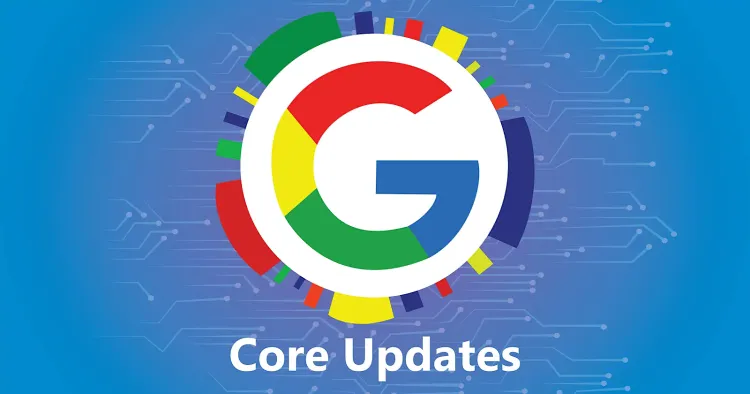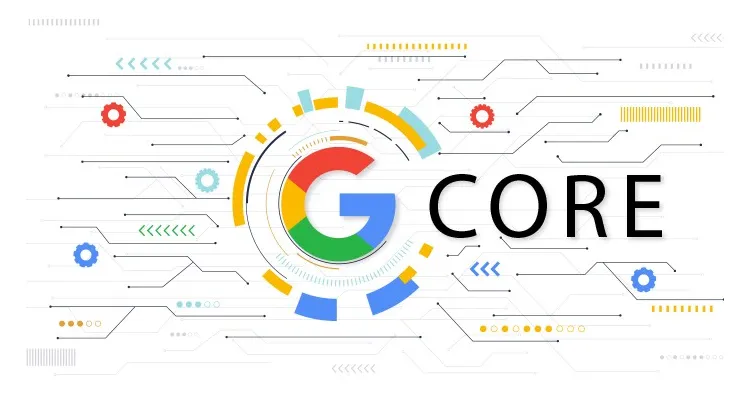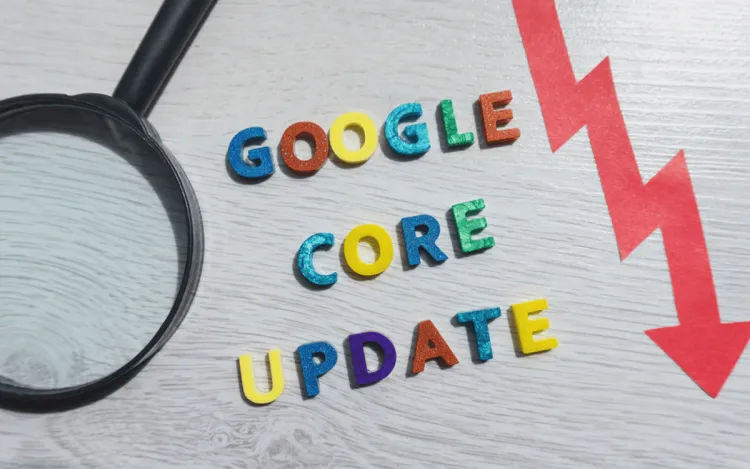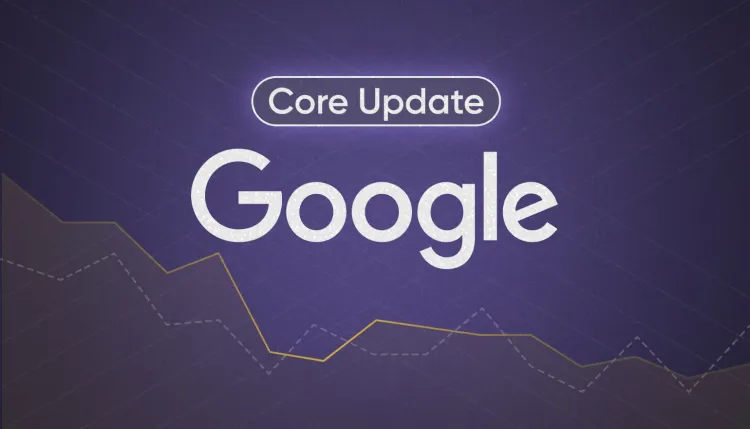Introduction
Google Core Updates are significant changes to Google’s search algorithm that aim to improve the quality and relevance of search results. These updates can affect website rankings, visibility, and overall SEO performance. Sites may see ranking shifts as Google reassesses the value of their content in relation to search queries. Understanding and adapting to these updates is crucial for maintaining and improving search rankings, as they emphasize quality content, user experience, and relevance to stay competitive in SEO.

What are Google Algorithms?
Google’s algorithms are the heart of its search engine, constantly evolving to deliver the most relevant and high-quality results to users. These complex systems analyze countless factors to determine which web pages should rank highest for any given search query.
At their core, Google algorithms aim to understand user intent and match it with the most valuable content. They consider elements like keyword relevance, site structure, user experience, and content quality. However, the exact workings remain a closely guarded secret.
Over the years, Google has rolled out major algorithm updates with colorful names like Panda, Penguin, and Hummingbird. Each brought significant changes to how websites are evaluated and ranked. Panda, for instance, targeted low-quality content, while Penguin cracked down on manipulative link-building practices.
More recent updates have focused on understanding natural language and context. The introduction of BERT in 2019 marked a leap forward in Google’s ability to grasp the nuances of human language and search queries.
For website owners and content creators, staying informed about algorithm changes is crucial. While chasing algorithms is futile, focusing on creating valuable, user-centric content remains the most sustainable strategy for long-term success in search rankings.
Ultimately, Google’s algorithms serve as the invisible judges of the internet, shaping how information is discovered and accessed by billions of users worldwide. As search technology continues to advance, these algorithms will undoubtedly play an even more significant role in our digital lives.
What is Google Core Update?
Google Core Updates are significant changes to Google’s main search algorithm and systems. These updates typically occur several times a year and can have a substantial impact on search rankings and organic traffic for websites across the internet.
Unlike smaller, more frequent updates, Core Updates are broad and comprehensive, often affecting multiple aspects of how Google evaluates and ranks web pages. They’re designed to improve the overall quality and relevance of search results for users.
When a Core Update rolls out, many websites may notice fluctuations in their search rankings. Some may see improvements, while others might experience drops. It’s important to note that these changes don’t necessarily mean there’s something wrong with affected pages; rather, it’s Google reassessing how it understands and values content relative to other pages.
Core Updates often focus on enhancing Google’s ability to assess content quality, relevance, and expertise. They may also refine how the algorithm interprets user intent behind searches. While Google doesn’t usually provide specific details about what each Core Update changes, they consistently advise website owners to focus on creating high-quality, user-centric content.
For site owners and SEO professionals, Core Updates serve as periodic reminders to continuously improve content and user experience. Rather than trying to chase algorithmic changes, the best approach is to consistently produce valuable, authoritative content that genuinely serves user needs.
Google typically announces Core Updates before or as they’re rolling out, giving webmasters a heads-up to expect potential ranking shifts. After a Core Update, it may take days or even weeks for the changes to fully settle, during which time search rankings can be somewhat volatile.
Understanding and adapting to Core Updates is crucial for maintaining and improving search visibility in the long term. It underscores the importance of staying informed about SEO best practices and focusing on creating the best possible content and user experience.

Core Updates Vs Minor Updates
Core Updates and Minor Updates are two distinct types of changes Google makes to its search algorithms, each with different scopes and impacts on search results.
Core Updates are major, broad changes to Google’s main algorithm. They typically occur a few times a year and can significantly affect search rankings across many websites and industries. These updates often refine how Google assesses overall page quality, relevance, and user experience.
On the other hand, Minor Updates are smaller, more frequent tweaks to the algorithm. They may target specific aspects of search or particular types of content. These changes usually have a less noticeable impact on rankings and may even go unannounced by Google.
Key differences include:
- Scope: Core Updates are comprehensive, affecting the entire search landscape. Minor Updates are often focused on specific issues or search features.
- Frequency: Core Updates happen several times a year. Minor Updates can occur daily or weekly.
- Impact: Core Updates can cause significant ranking fluctuations across many websites. Minor Updates typically have a subtler effect, often impacting only a small subset of queries or sites.
- Announcement: Google usually pre-announces Core Updates. Minor Updates often roll out without formal communication.
- Recovery time: After a Core Update, it may take weeks for rankings to stabilize. Minor Updates generally have quicker or less noticeable effects.
- SEO response: Core Updates often require a holistic review of site quality and content strategy. Minor Updates might need more targeted adjustments to specific elements.
- Purpose: Core Updates aim to improve the overall search experience and quality of results. Minor Updates often address specific issues or introduce incremental improvements.
For website owners and SEO professionals, understanding this distinction helps in interpreting ranking changes and forming appropriate strategies. While it’s crucial to stay informed about both types of updates, Core Updates generally warrant more attention and may require broader site improvements.
How Do Google Core Updates Affect SEO?
Google Core Updates can significantly impact SEO efforts and website performance in search results. These updates often lead to noticeable shifts in search rankings, affecting organic traffic and visibility for many websites.
When a Core Update rolls out, it can influence SEO in several ways:
- Ranking fluctuations: Websites may experience sudden changes in their search positions, either rising or falling for various keywords.
- Traffic changes: As a result of ranking shifts, organic traffic can increase or decrease, sometimes dramatically.
- Content reassessment: Google reevaluates content quality and relevance across the web, potentially rewarding high-quality pages and demoting others.
- User experience focus: Core Updates often emphasize the importance of user experience factors, such as page speed, mobile-friendliness, and interactivity.
- E-A-T principles: Expertise, Authoritativeness, and Trustworthiness become increasingly crucial for content evaluation.
- Featured snippet changes: The selection and display of featured snippets may be altered, affecting click-through rates.
- Industry impact: Some updates may affect certain industries or types of websites more than others.
To adapt to Core Updates, SEO strategies often need refinement:
- Content quality: Focusing on creating comprehensive, accurate, and valuable content becomes even more critical.
- Technical SEO: Ensuring websites are technically sound, fast-loading, and mobile-friendly is essential.
- User intent: Aligning content with user search intent and providing clear, useful information is key.
- Diversification: Relying on a diverse set of keywords and traffic sources can help mitigate the impact of ranking changes.
- Holistic approach: Looking at the overall website quality rather than fixating on individual ranking factors is important.
- Continuous improvement: Regularly updating and enhancing existing content can help maintain or improve rankings.
It’s crucial for SEO professionals to monitor their websites closely during and after Core Updates, analyzing changes and adapting strategies accordingly. While immediate reactions to ranking drops are tempting, Google advises taking a measured approach and focusing on long-term improvements rather than quick fixes.

How to Tell When a Core Update Is Going to Happen
Predicting Google Core Updates with certainty is challenging, as Google doesn’t always provide advance notice. However, there are several ways to stay informed and prepare for potential updates:
1. Official Google channels:
- Follow the Google Search Central Blog for announcements
- Monitor the official Google SearchLiaison Twitter account
- Keep an eye on Google’s Search Console for notifications
2. SEO community chatter:
- Engage in SEO forums and social media groups
- Follow respected SEO experts and influencers on platforms like Twitter
3. Tracking tools:
- Use SEO tools that monitor algorithm fluctuations
- Pay attention to ranking trackers for unusual movements
4. Seasonal patterns:
- Core Updates often occur a few times a year
- Look for historical patterns in update timing
5. Industry news sites:
- Follow reputable SEO news websites for early reports and analysis
6. Ranking volatility:
- Sudden, widespread ranking changes across multiple sites can signal an update
7. Search Console data:
- Unexpected shifts in impressions or clicks may indicate an update
8. Google statements:
- Sometimes Google confirms updates after they’ve begun rolling out
9. Pre-update tests:
- Google occasionally tests changes before full rollout, causing minor fluctuations
10. Webmaster conferences:
- Attend or follow Google’s webmaster conferences for potential hints
While these methods can help you anticipate updates, it’s best to focus on consistently improving your site’s quality and user experience. This approach ensures you’re well-prepared regardless of when updates occur.
Google Core Update August 2024
The Google Core Update of August 2024 had significant impacts on websites across various industries. As with previous core updates, this one brought notable changes to search rankings and organic traffic for many sites.
Key impacts observed include:
- Ranking shifts: Many websites experienced substantial changes in their search positions, with some seeing dramatic rises or falls for important keywords.
- Traffic fluctuations: As a direct result of ranking changes, numerous sites reported significant increases or decreases in organic traffic.
- Content quality emphasis: The update appeared to place even greater importance on high-quality, in-depth content that thoroughly addresses user intent.
- User experience factors: Websites with superior page experience metrics, including Core Web Vitals, seemed to benefit from the update.
- E-A-T reinforcement: There was a noticeable boost for sites demonstrating strong Expertise, Authoritativeness, and Trustworthiness in their respective niches.
- Mobile optimization: The update further prioritized mobile-friendly websites, reflecting the continued shift towards mobile-first indexing.
- Page speed: Faster-loading pages appeared to gain an advantage, highlighting the ongoing importance of site performance.
- YMYL sectors: Websites in Your Money or Your Life categories (finance, health, etc.) saw particularly significant fluctuations, suggesting a refined approach to evaluating these sensitive topics.
- Local SEO changes: Some businesses reported shifts in local search visibility, indicating possible tweaks to local ranking factors.
- Featured snippets: There were noticeable changes in the selection and display of featured snippets, affecting click-through rates for many queries.
- Long-form content: In-depth, comprehensive articles seemed to perform well, possibly due to their ability to thoroughly answer user queries.
- Multimedia integration: Websites effectively using various content formats (text, images, videos) appeared to benefit from the update.
Webmasters and SEO professionals responded by closely analyzing their site performance, identifying areas for improvement, and adjusting their strategies accordingly. As with all core updates, the focus remained on creating high-quality, user-centric content and optimizing overall site performance and user experience.
Google Core Updates from the Past Two Years
Google Core Updates over the past two years have continued to shape the SEO landscape, each bringing its own set of changes and challenges. Here’s an overview of the major updates from 2023 and 2024:
2023 Updates:
- March 2023 Core Update:
- Focused on content quality and relevance
- Emphasized E-A-T principles
- Impacted YMYL (Your Money or Your Life) sites significantly
- June 2023 Core Update:
- Refined understanding of user intent
- Boosted sites with comprehensive, in-depth content
- Affected local search rankings
- September 2023 Core Update:
- Enhanced mobile-first indexing
- Prioritized user experience factors
- Improved assessment of content freshness and timeliness
- December 2023 Core Update:
- Further refined E-A-T evaluation
- Focused on content depth and expertise
- Impacted video content visibility in search results

2024 Updates:
- February 2024 Core Update:
- Improved understanding of natural language
- Enhanced featured snippet selection
- Emphasized page experience metrics
- May 2024 Core Update:
- Refined evaluation of product review content
- Boosted authoritative sources in YMYL topics
- Improved understanding of content in multiple languages
- August 2024 Core Update:
- Further emphasized high-quality, user-centric content
- Refined local search algorithms
- Improved assessment of multimedia content integration
Each of these updates brought its own set of ranking fluctuations and shifts in SEO best practices. Common themes across these updates included:
- Increasing importance of E-A-T principles
- Greater emphasis on user experience and page performance
- Refined understanding of user intent and content relevance
- Continued focus on mobile-first and page experience factors
- Enhanced evaluation of YMYL content
These updates reinforced the need for websites to focus on creating high-quality, authoritative content that genuinely serves user needs. They also highlighted the importance of technical SEO, including site speed, mobile optimization, and overall user experience.
How to protect yourself from these updates?
To protect your website from the impact of Google Core Updates, it’s crucial to focus on sustainable, quality-driven SEO practices. Here are key strategies to build resilience:
- Prioritize content quality:
- Create comprehensive, original content
- Address user intent thoroughly
- Regularly update and improve existing content
- Emphasize E-A-T:
- Showcase author expertise and credentials
- Build site authority through quality backlinks
- Ensure transparency in your content and business practices
- Optimize user experience:
- Improve site speed and Core Web Vitals
- Enhance mobile responsiveness
- Create intuitive site navigation
- Diversify traffic sources:
- Don’t rely solely on organic search
- Build a strong social media presence
- Explore email marketing and other channels
- Focus on technical SEO:
- Maintain a clean site structure
- Implement proper schema markup
- Ensure crawlability and indexability
- Monitor performance regularly:
- Track rankings, traffic, and engagement metrics
- Use tools like Google Search Console and Analytics
- Identify and address issues promptly
- Stay informed:
- Follow official Google channels
- Engage with the SEO community
- Keep up with industry news and best practices
- Avoid black hat techniques:
- Steer clear of manipulative tactics
- Focus on long-term, sustainable strategies
- Optimize for voice and mobile search:
- Use natural language in content
- Target long-tail keywords and questions
- Build a strong brand:
- Cultivate brand recognition and loyalty
- Engage with your audience across platforms
- Conduct regular content audits:
- Identify and improve underperforming content
- Ensure content aligns with current SEO best practices
- Focus on user intent:
- Understand and address the needs behind searches
- Create content that genuinely helps your audience

Conclusion
In conclusion at ador agency, Google Core Updates can have a major impact on your website’s SEO, influencing search rankings and visibility. To stay resilient, it’s essential to focus on producing high-quality, relevant content and providing a great user experience. By continuously optimizing your site and adapting to the evolving criteria of these updates, you can maintain and improve your SEO performance over time.
FAQs
1. How often do Core Updates happen?
Core Updates typically occur several times a year, usually every few months.
2. How long do Core Updates take to roll out?
Most Core Updates take about 1-2 weeks to fully roll out, though effects can be seen earlier.
3. Can I recover from a Core Update if my site is negatively impacted?
Yes, recovery is possible. Focus on improving overall site quality and relevance. The next Core Update may recognize these improvements.
4. Does Google pre-announce all Core Updates?
Google aims to pre-announce major Core Updates, but sometimes they’re confirmed as they’re rolling out.
5. Should I make immediate changes if I see ranking drops during a Core Update?
It’s best to wait until the update fully rolls out before making major changes. Assess the overall impact first.
6. Are Core Updates related to specific industries?
Core Updates are broad and affect all types of content. However, some industries may feel larger impacts depending on the update’s focus.
7. How can I tell if my site was affected by a Core Update?
Monitor your search rankings, organic traffic, and Search Console data for significant changes coinciding with update timelines.
8. Do I need to submit my site to Google after a Core Update?
No, you don’t need to resubmit your site. Google will recrawl and reindex pages naturally.
9. Are Core Updates the same as algorithm updates?
Core Updates are a type of algorithm update, but not all algorithm updates are Core Updates. Core Updates are more significant and broad-reaching.
10. How do Core Updates differ from other Google updates like Panda or Penguin?
Core Updates are broader in scope and impact the main search algorithm, while updates like Panda or Penguin targeted specific issues like content quality or link schemes.
















































